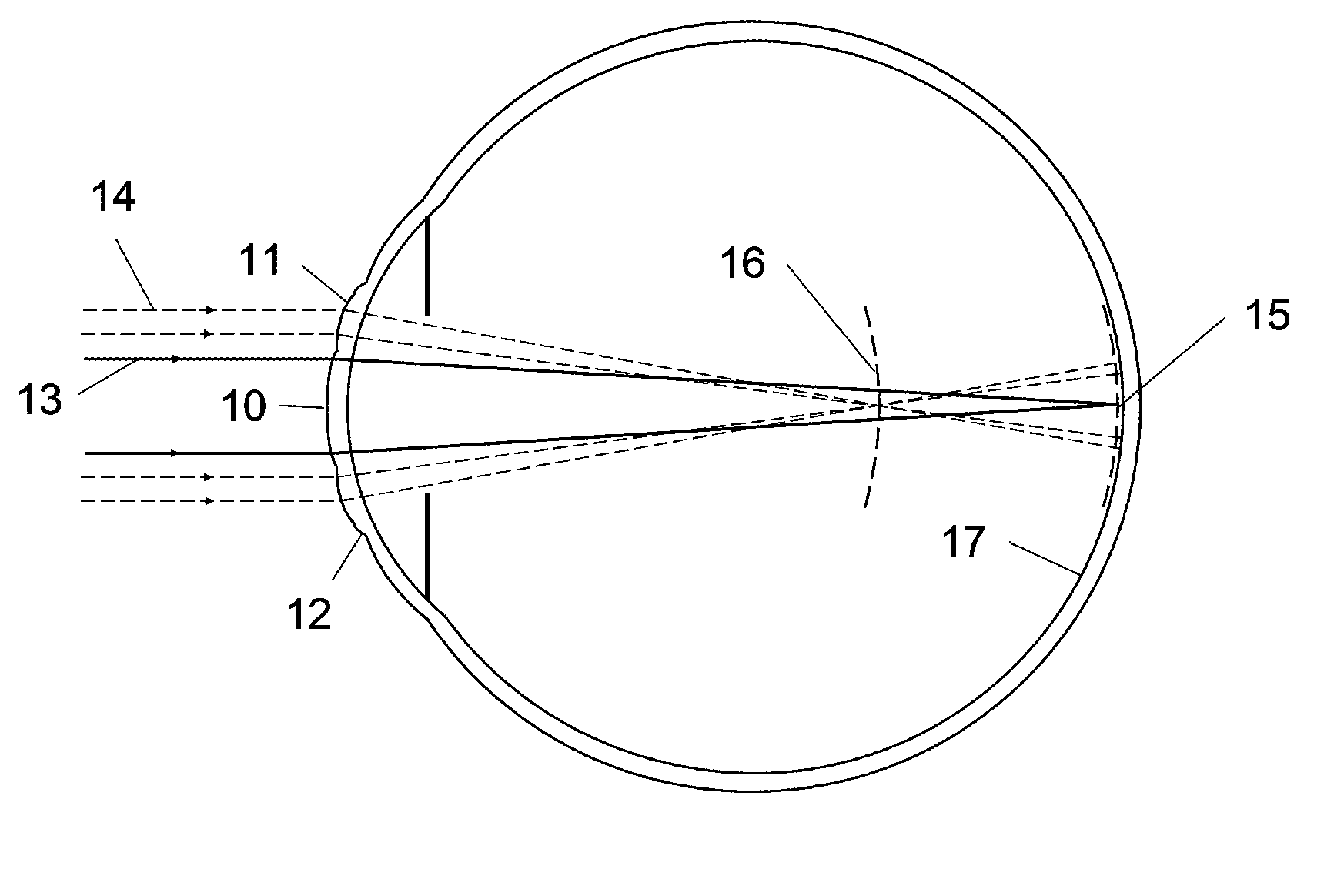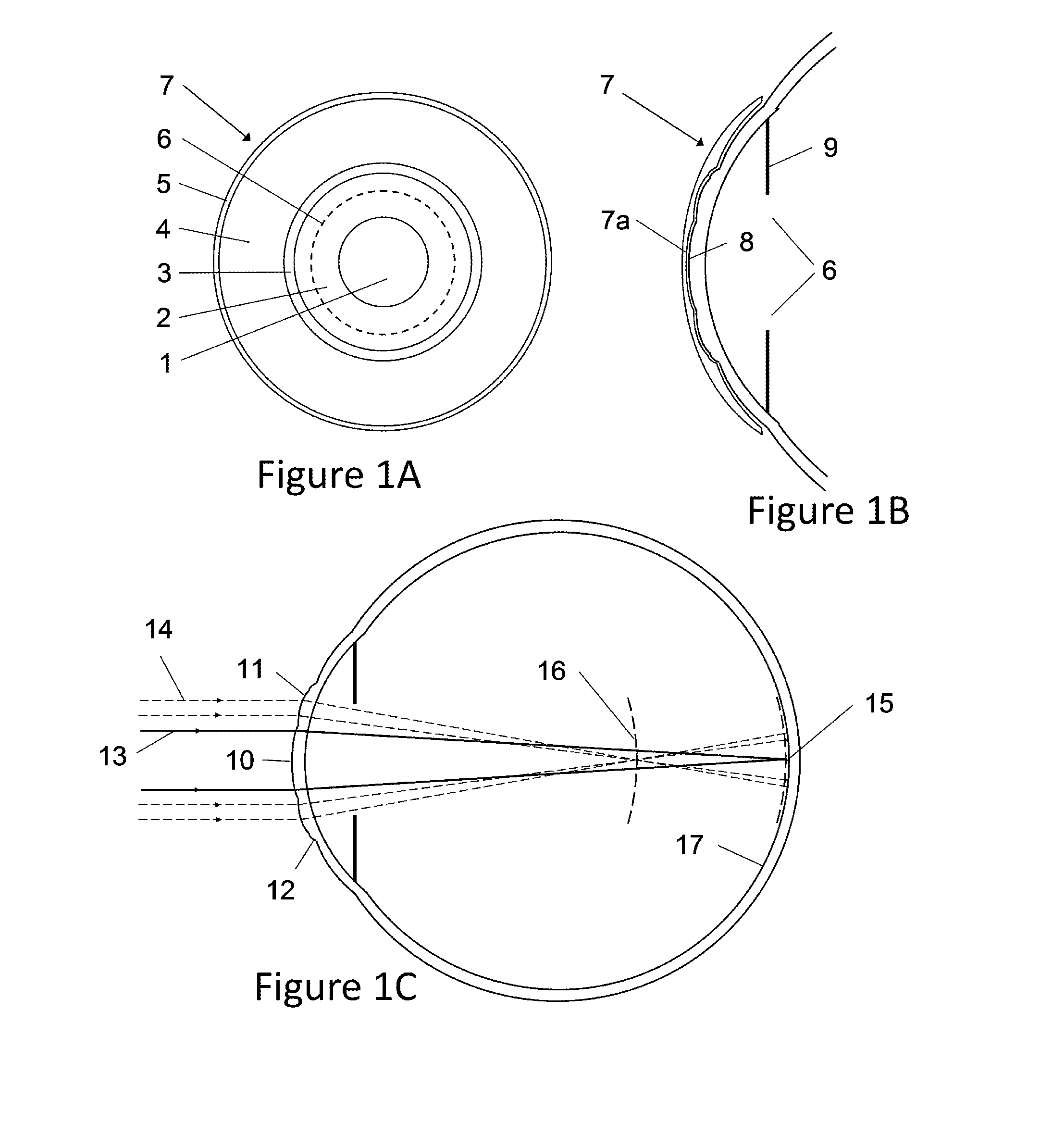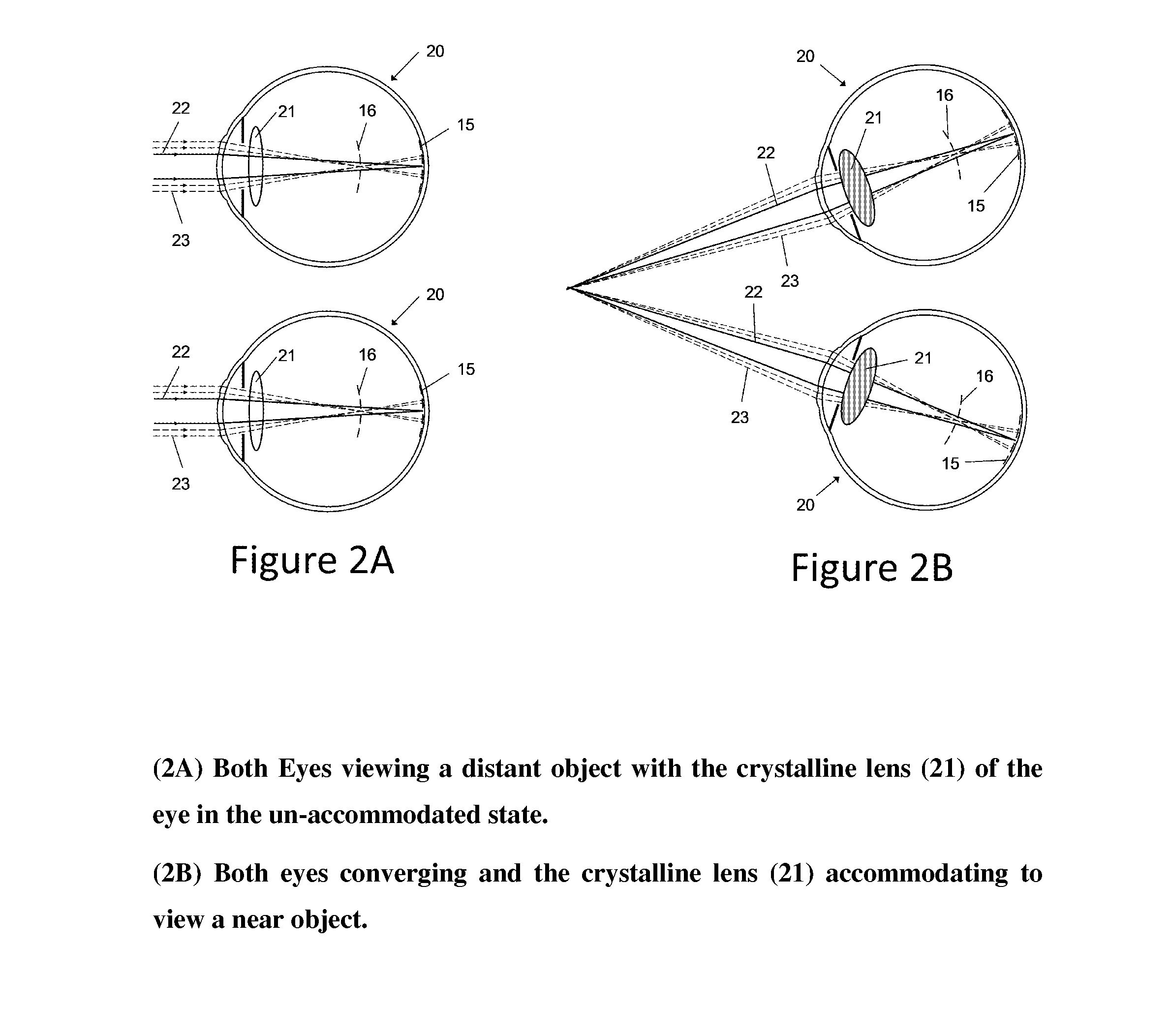Contact lens and method for prevention of myopia progression
a technology of myopia and contact lens, which is applied in the field of contact lens and method for preventing myopia progression, can solve the problems of glaucoma damage, degenerative myopic retinopathy, eye more susceptible to retinal detachment, and increased risk of developing blindness, so as to and slow the progression of myopia
- Summary
- Abstract
- Description
- Claims
- Application Information
AI Technical Summary
Benefits of technology
Problems solved by technology
Method used
Image
Examples
Embodiment Construction
[0039]Referring to FIGS. 1A to 1C, a contact lens 7 according to one embodiment of the invention has a posterior surface 7a which has a specific contour as will be described further below. When the lens 7 is placed on the eye of a wearer, the posterior surface 7A has the effect of reshaping the anterior corneal surface 8 of the eye. In use, the reshaping can occur gradually over time.
[0040]The posterior surface 7A is contoured to include a vision correction moulding zone 1 and a vision treatment moulding zone 2, which in the example shown surrounds the vision correction moulding zone 1. The posterior surface 7A also includes a reverse geometry zone 3, an alignment zone 4, and a peripheral zone 5. The position of a typical pupil margin of a wearer is shown by broken line 6 in FIG. 1A.
[0041]The vision correction moulding zone 1 has a curvature that is defined by its base-curve. The base-curve has a radius that is longer than the radius of the anterior corneal surface before the lens o...
PUM
 Login to View More
Login to View More Abstract
Description
Claims
Application Information
 Login to View More
Login to View More - R&D
- Intellectual Property
- Life Sciences
- Materials
- Tech Scout
- Unparalleled Data Quality
- Higher Quality Content
- 60% Fewer Hallucinations
Browse by: Latest US Patents, China's latest patents, Technical Efficacy Thesaurus, Application Domain, Technology Topic, Popular Technical Reports.
© 2025 PatSnap. All rights reserved.Legal|Privacy policy|Modern Slavery Act Transparency Statement|Sitemap|About US| Contact US: help@patsnap.com



